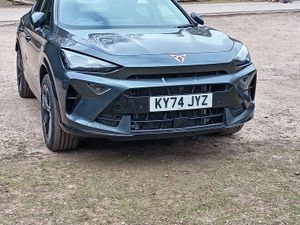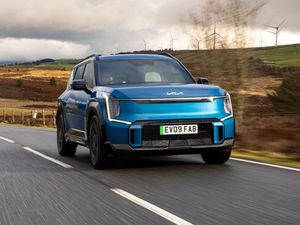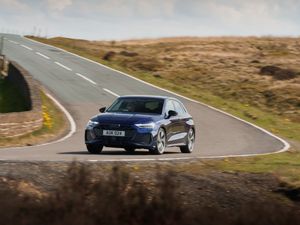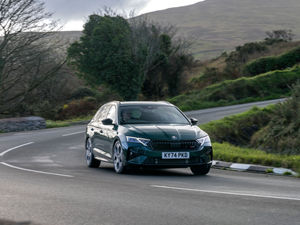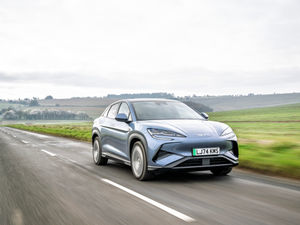UK drive: Hyundai’s i10 remains a dependable city car contender
Ted Welford gets behind the wheel of Hyundai’s city car to see if it can continue to compete in a hotly-contested class
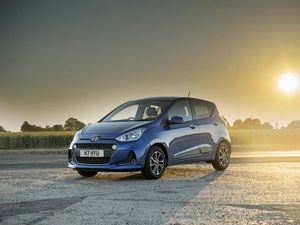
What is it?
The i10 is one of Hyundai’s best-selling cars and has established itself as one of the class-leading city cars on the market. It was only the second ‘i’ product – following on from the i30 – which helped Hyundai dig itself out of making sub-standard cheap cars and begin to make cars which can rival the class best.
The second-generation i10 first reached showrooms in 2014. It boasted a new look, an improved interior and better connectivity – the latter being very important on a car which has lots of appeal as a first car.

What’s new?
To say the latest i10 has had a facelift would be a bit extreme, as it’s more of a nip and tuck. The most obvious difference is the new cascading front grille – Hyundai’s new ‘family face’.
Premium trim and upwards also come with LED daytime running lights, which are especially bright. The rear also features a new black inlay in the bumper, while revised fog lights feature too.
Premium and Premium SE now comes with a seven-inch touchscreen, with well-integrated Android Auto and Apple CarPlay connectivity.

What’s under the bonnet?
Hyundai offers two petrol engines in the i10 – a 65bhp 1.0-litre and an 86bhp 1.2-litre, both of which are naturally-aspirated, and are paired to a precise five-speed manual gearbox.
Our test car came with the smaller unit, which can accelerate to 60mph in a last-in-the-race-at-sports-day 14.5 seconds and onto a top speed of 97mph.
While most engine runs out of puff at higher speeds, this engine never really has any puff in the first place. It’s about adequate around town, but away from it, it really has to be revved to be able to keep up with traffic. Admittedly this is a city car so you shouldn’t expect anything extremely powerful, but for the £500 extra that the 86bhp costs, that’s where our money would go.
Both engines are very efficient – with the 1.0-litre returning around 50mpg in real-world driving, while CO2 emissions come in at 117g/km.
What’s it like to drive?
Despite the rather gutless engine, the i10 is a fine car to drive.
The steering might be comically light at times, but after all, it has to be tailored towards the city where ease-of-use is the name of the game for weaving in and out of traffic and in tight parking spaces.
It rides reasonably well, and once the i10 eventually gets up to speed, it’s quite refined. It has one of the of the quietest cabins in its class and is remarkably refined for a city car – even at higher speed. It’ll only be potholes which undo the i10’s crown, but for the best part, it rides well.

How does it look?
Compared to modern-looking offerings, such as the Toyota Aygo and Kia Picanto, the i10 doesn’t offer the sharpest aesthetic in its segment.
While the latest update, with the introduction of new LED running lights and revised bumpers, have helped inject some modernity into Hyundai’s city car, it arguably struggles to stand out from the crowd.
It’s worth noting that other manufacturers – Vauxhall, Ford and Kia, namely – have helped spread their city car portfolios further with the introduction of crossover-style models, but Hyundai is yet to go down this avenue, despite doing so with its larger i20 supermini.

What’s it like inside?
It’s perhaps inside where the i10’s latest update shows – particularly with its larger touchscreen.
The seven-inch touchscreen, which is fitted to Premium and range-topping Premium SE grades – is a doddle to use, and while it might not look as attractive as newer systems, it’s well-integrated into the cabin and doesn’t look like an iPad has been superglued to the dashboard.
The larger button-free layout also looks the part, while everything is accessible and easy to read.
Up against the Kia Picanto, the i10 can’t quite offer class-leading space, but for a car of its size, it’s impressive that it can accommodate four normal-sized adults in relative comfort. Its 252-litre boot is also nothing to be ashamed of and is more than capable of carrying several shopping bags.

What’s the spec like?
Entry level i10s are quite sparsely-equipped, with the brief equipment list comprising electric front windows, remote locking and body-coloured bumpers – this starts from £9,795.
Our Premium spec test car is the one to go for with its balance of value and good equipment. It comes with the aforementioned touchscreen with smartphone connectivity, climate control, front fog lights and hill-start assist. Our test car came in at £12,795 including its metallic paint and Driver Assist Pack (comprising emergency braking and lane departure warning) – the latter being a good option to choose.

Range-topping Premium SE adds a sunroof, a heated steering wheel, sat nav and rear parking sensors, but at £13,675, it all begins to look rather expensive for a small city car.
Verdict
The latest i10 might not be a revolutionary new model, but it remains true to what has made Hyundai the credible manufacturer it is today. It’s largely well-priced, comes with plenty of standard equipment (bar the entry-level S version) and confidently carried out what it was designed for – to be a good city car.
While the 1.0-litre petrol unit lets the side down, just for its sheer lack of grunt, it’s otherwise a credible city car, which remains a worthy choice after its latest update.

